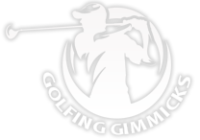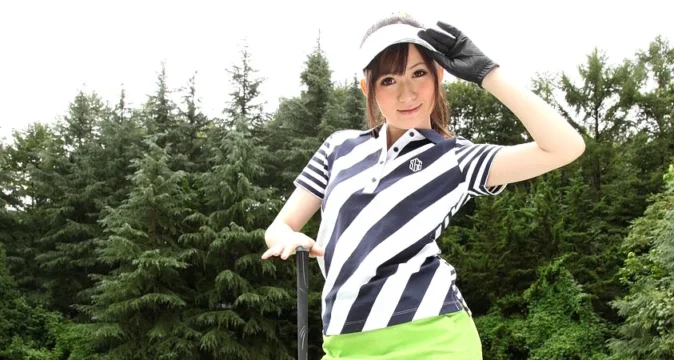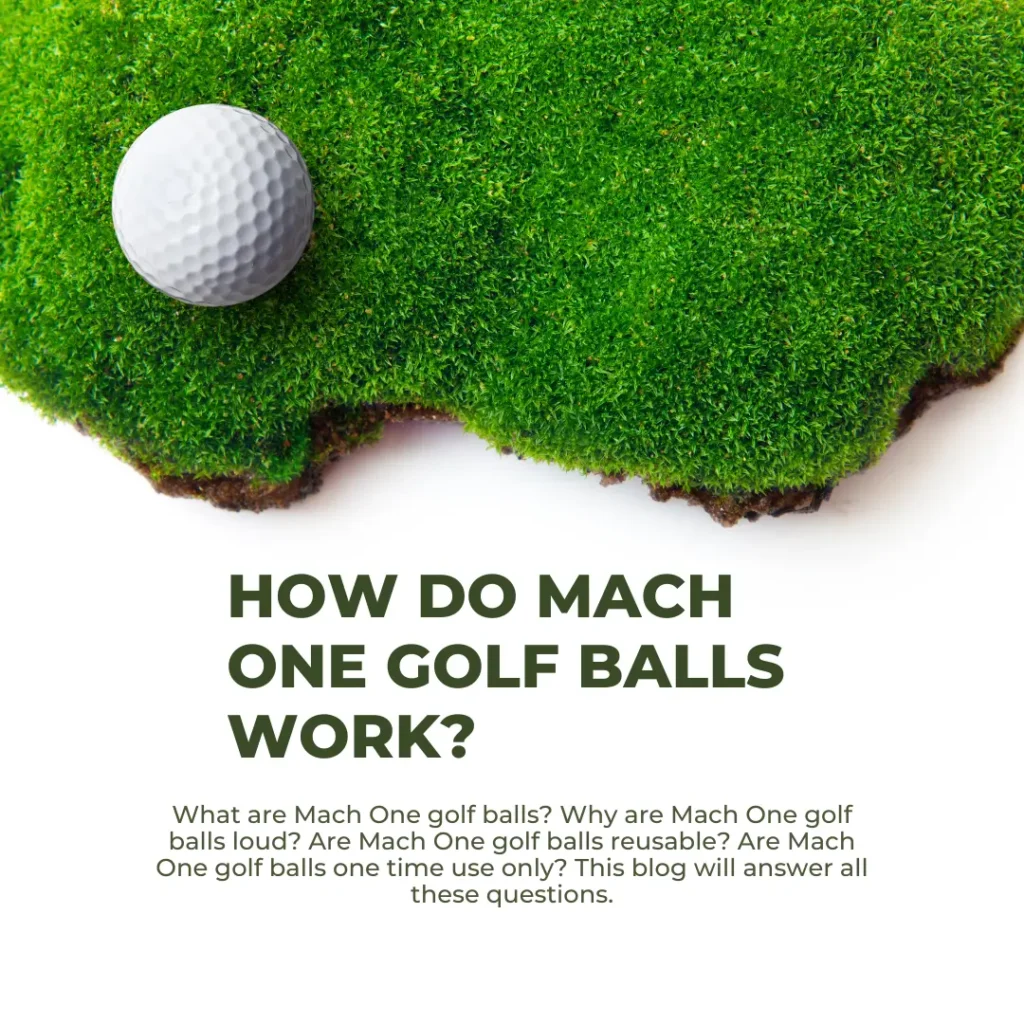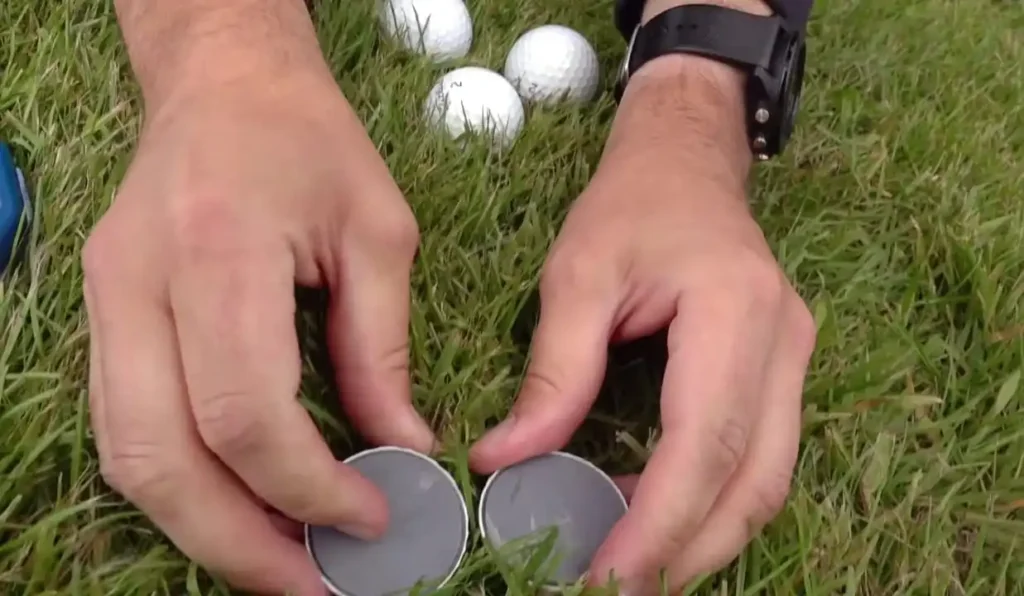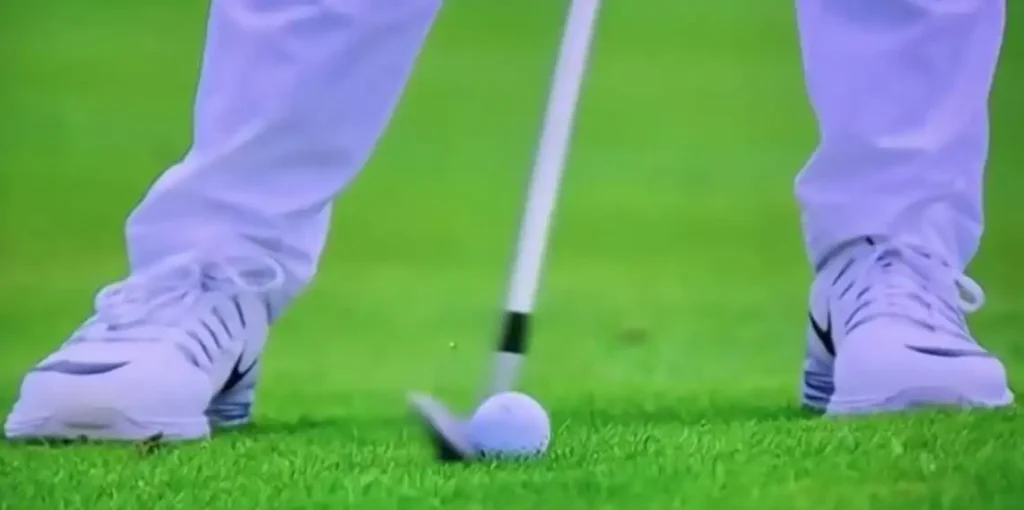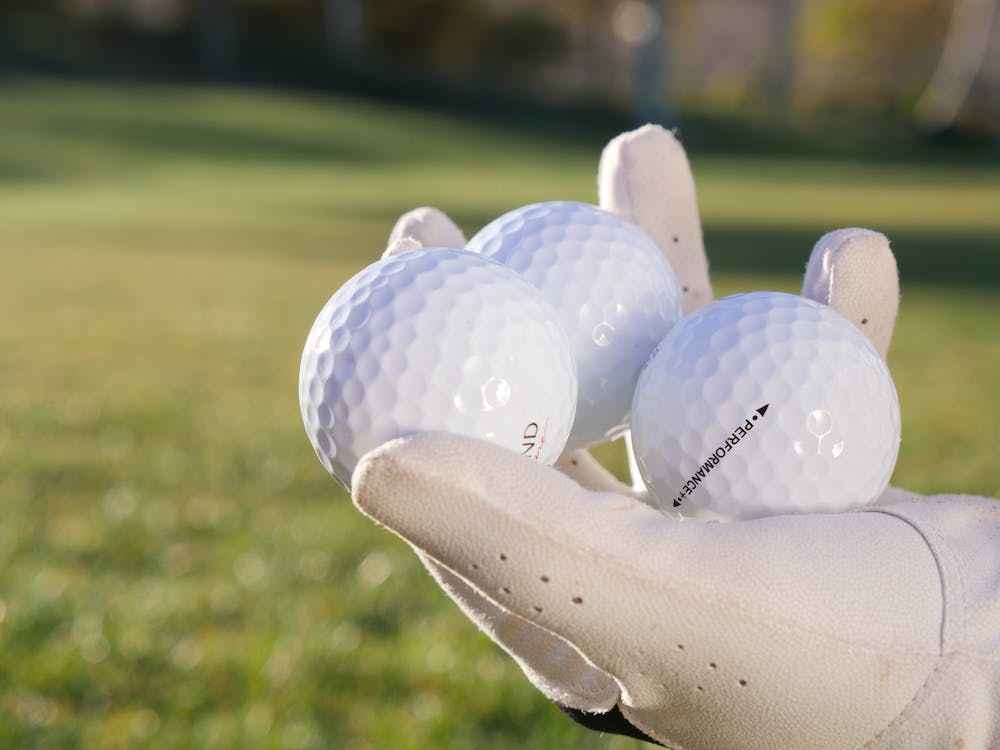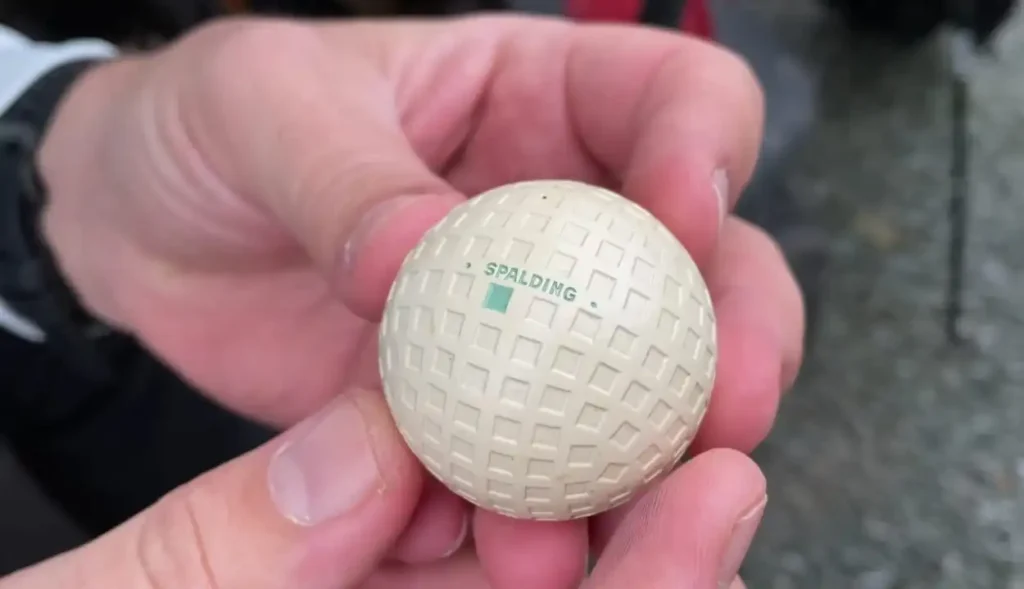Have you ever tried hitting the golf ball but ended up striking just the top? Topping the golf ball can be embarrassing. This lost-stroke-inducing frustration for golfers of all abilities may lead to embarrassing shots and lost strokes. We will explore why golfers experience this issue as well as offer solutions. Hence, from ball positioning adjustments and tweaks in swing mechanics to essential aspects that contribute to topping it, we’ll discuss everything. We’ll help you efficiently avoid topping the golf ball so you won’t be embarrassed like a normie in front of your friends.

Training Equipment to stop Topping the Golf Ball
Topping the golf ball becomes difficult when you have the right pieces of equipment by your side. This section will discuss which products you can buy online to stop topping a dimpled sphere. We at Golfing Gimmicks always focus on equipping yourself with the best gear to perform like a pro golfer on the golf course. You need golf swing trainers, golf club sets, and stick training bundles to make sure you can lose yourself in this beautiful sport without worrying about the equipment. So, check out these amazing products:
| Tour Aim 2.0 Golf Training Aid W/ 3 Alignment Sticks & 5 Swing Plane Features | More Information |
| Callaway Swing Easy Golf Swing Trainer Aid, Orange | More Information |
| Golf Swing Trainer Elbow Brace | More Information |
| PGM Men’s Complete Golf Club Sets | More Information |
| Cobra Golf 2022 LTDX Men’s Fairway Matte Black-Gold | More Information |
| Stick Mobility 3 Stick Training Bundle | More Information |
Understanding the Basics: What is Topping?
Before delving deeper into what causes golf ball topping, let’s discuss what it means to top a golf ball. In simple terms, topping occurs when the clubhead comes in contact with the upper portion of a golf ball, producing low-flying shots without distance or accuracy. It’s important to recognize this issue so you can find solutions. Now, let’s move on to discussing what makes a golfer top their golf ball on the green
Common Causes of Topping the Golf Ball
Posture Matters: The Foundation of a Solid Swing
One key contributor to topping the golf ball is poor posture, which forms the cornerstone of an effective swing and any deviations can lead to various faults such as topping. Achieving the correct swing plane is highly dependent upon maintaining correct posture throughout your swing.
Ball Position: Finding the Sweet Spot
The position is very important when it comes to golf ball play; any error in its placement – be it too forward or too backward – could greatly hinder your ability to make clean contact. Adjusting ball position is one of the keys to preventing topping and creating more successful strikes with each swing.
Weight Distribution: Balancing Your Stance
Improper weight distribution can result in thin shots and tops, and proper weight transfer must occur for successful swings to ensure a balanced stance and avoid the perils associated with topping the golf ball. You cannot help hitting on top of the golf ball when your posture isn’t well-balanced.
Alignment: Aiming for Success
Misalignment can also contribute to topping the ball. So, make sure that your clubface remains square for an efficient swing. Proper alignment increases your odds of making solid contact with the ball while eliminating the frustration of overtopping. That’s how you can stop topping the golf ball during a tournament.
Backswing Over-Rotation: Power vs. Control
Over-rotating during the backswing in search of power can result in inconsistency and topping. Achieving quality shots by striking an ideal balance between power and control in the backswing is imperative; understanding its dynamics is necessary for addressing the root causes of topping and improving overall swing performance.
Eliminating the Chicken Wing
The “Chicken Wing”, consisting of a bent lead arm and cupped wrist after impact, can result in topping the golf ball. If you want a quick fix for topping the golf ball then learn to overcome your chicken wing. Search online to find some ways to get over the chicken wing so you can improve as a player.
Effective Strategies to Stop Topping the Golf Ball
If you are looking for some effective golf drills to stop topping the ball then we have some brief suggestions for you. These simple strategies will help you get over this handicap:

Lengthening Your Arms: Creating the Right Extension
Maintaining proper arm extension during golf swing is an integral component of preventing topping the golf ball. Lengthening arms during swing ensures a proper swing plane, therefore, guaranteeing solid contact between your clubhead and ball, which then adds to overall accuracy while helping minimize risks such as topping.
Improving Weight Transfer: Shifting Power Effectively
Optimizing weight transfer between both feet is one key way of combatting the tendency for golf balls to top over. Start the swing by placing more weight on one leg than necessary and then shift that load across to its target counterpart as quickly as possible to allow proper extension through the impact zone for optimal extension and power output. Weight transfer plays an essential part in producing power, helping you avoid topping the golf ball.
Choosing the Right Club Length: Finding the Sweet Spot on the Shaft
Selecting an ideal club length based on your height and swing can help prevent topping. Making sure the sweet spot on the club lines up with your natural swing path reduces mishitting the ball. Moreover, an appropriate club length enables more consistent, controlled swinging that reduces the chances of topping. And that’s how you can stop topping the golf ball very easily.
Maintaining Spine Angle: Staying in the Right Position
Deviation from the correct spine angle is one of the primary contributors to topping in golf, so maintaining it during your swing is of vital importance for clean contact and for reducing the risks of topping and improving performance. By staying in this ideal position you increase the odds of a downward strike on the ball and reduce chances of topping while optimizing overall swing performance. Say bye-bye to golf ball topping with this technique.
Additional Tips and Techniques to Prevent Topping the Ball
Okay, you may still face problems when trying to prevent golf ball topping. Well, there’s no 100% results guaranteed quick fix for topping the golf ball, but we will try our best to share a few amazing tips. Here are some additional techniques to prevent this folly:
Ball Position Adjustment: The Right Stance for Success
Attaining proper ball positioning within your stance is the cornerstone of effective shotmaking, helping prevent top shots. Maintaining an equitable stance without over-forcing it in any one direction increases the odds that solid contact will be made with the ball and leads to more consistent, controlled swings. That’s a great way to prevent topping the golf ball.
Shoulder Slope: Preventing an Upward Arc
Adjusting your shoulder slope is an effective strategy to prevent an upward swing arc that often results in topping the ball. By creating more of a downward blow during a downswing and decreasing the risk of mishits, maintaining an appropriate shoulder slope can greatly enhance overall ball-striking quality. It can overcome the causes of topping the golf ball.
Balance Maintenance: Drills for Stability
Engaging in drills and exercises designed to promote balance can help mitigate topping issues. Such exercises focus on encouraging proper weight transfer and stability throughout your swing; by adding these drills into your routine, they may improve overall swing mechanics while decreasing the chances of topping the golf ball.
Hand Placement: The Right Position for Success
Assuring proper hand placement is integral for optimal clubface positioning. Limiting forward hand movements helps avoid de-lofting of the clubface, leading to more consistent and controlled impacts with the ball. By maintaining an appropriate hand placement you can help protect against topping risk while increasing the performance of your golf swing.
Shoulder Tuck: Stabilizing Your Head Position
Implementing a shoulder tuck technique is key for maintaining head stability during a golf swing, leading to more controlled, downward strikes on the ball and less likelihood of topping. By including this strategy in your swing routine, shoulder tuck can assist with maintaining overall ball-striking consistency as well as reduce potential topping issues.

Addressing Thin and Topped Shots: Strategies and Techniques
Topping the golf ball isn’t the only problem you may face when playing golf. Thin shots can be just as infuriating as topped shots. But this section will help you overcome both of these issues. So, here are some tried-and-tested strategies to avoid topping the golf ball as well as thin shots:
Shorten Your Swing: Simplifying for Consistency
Opting for a shorter swing can significantly enhance your control and consistency in shots, helping achieve more uniform ball contact while decreasing thin or top shots. Furthermore, this adjustment provides for enhanced management of the swing leading to overall improved performance. That’s how you can avoid hitting on top of the golf ball.
Arm Straightness: Sequence for Success
Success lies in maintaining straight arms during each swing. Ensuring proper sequence between wrists, elbows, and arms keeps the club on a level path; this increases chances of clean contact between the ball and club face as well as reduces chances for thin or missed shots during swinging motion.
Stabilizing Your Sternum: Establishing the Bottom of the Arc
Staying focused on your target is vital for creating an ideal swing arc, ensuring the bottom of the swing arc aligns properly and hits the ball before touching down on the ground. By maintaining stability in the sternum position you can reduce the chances of top shots occurring. So, it’s a great way to stop topping the golf ball and staying true to your game.
Wedge Falling to the Ground: Creating the Right Impact
Attaining optimal impact requires making subtle adjustments (like raising the heel of your trail foot off of the ground) which contributes to cleaner iron shots without topping. By paying close attention to where your trail foot sits on the course, you can maximize impact quality while decreasing the chances of thin or missed shots.
Additional Iron Shot Tips: Fine-Tuning Your Approach
Fine-tuning your approach requires multiple components: checking posture, setting club correctly, reducing shaft lean, pivoting into divots to minimize shaft lean, pivoting into divots for circular backswing, and maintaining appropriate stance width. Together these tips combine to refine iron shots, providing an efficient strategy against thin or top shots during your game.
Special Considerations for Fairway Woods: Topping Prevention
We’ve discussed some essential golf drills to stop topping the ball. Now, let’s discuss some special strategies for Fairway Woods. Read these simple suggestions to understand how to prevent top shots when these clubheads:
Ball Position for Fairway Woods: Finding the Right Spot
Fairway woods require careful consideration to prevent topping. Achieve cleaner contact by shifting the ball position slightly behind your front foot can ensure greater effectiveness of swing, lessening chances of topping and increasing control during play. Adjusting this aspect is key for fairway woods as this creates more effective control and thus reduces the chances of topping. So, be mindful of the golf ball position if you wish to stop topping the golf ball.
Lie Conditions: Choosing the Right Situation
Fairway Woods was specifically created for good lies, so adapting your approach according to lie conditions is key to preventing topping. Doing this involves making adjustments in terms of face angle and grip to meet challenging lies such as those found in rough conditions and avoiding topping when dealing with challenging lies in general. In doing this, you will avoid topping and ensure consistency and reliability with each fairway wood shot you attempt.
Maintaining Tempo: The Rhythm of Success
Successful fairway wood shots require maintaining a consistent and controlled swing tempo throughout. Resist the temptation to overpower your shot; doing so could result in topping. By maintaining an easy rhythmic swing tempo you increase the odds of making solid contact with the ball while decreasing the risk of topping. So, avoid topping the golf ball by maintaining the tempo. Let the rhythm of golf flow into your veins when you’re pitching.

Conclusion
So, what’s the takeaway in this article? Well, golf ball hitting can be a challenging endeavor, but with an in-depth knowledge of its contributing factors, you can take extra steps to address and overcome it. By paying particular attention to ball position, arm extension, weight shift, and eliminating chicken wings from your practice routine you’ll soon see improvement in ball-striking ability and increased enjoyment from time spent golfing. No more golf ball topping. Thanks to the tips mentioned above, you can stop topping the golf ball once and for all!
FAQs – Topping the Golf Ball And Solutions
What is Topping the Golf Ball?
Topping the golf ball refers to an undesirable outcome caused when hitting the upper portion of a golf ball with its clubface and striking it directly above, creating shots that usually travel low without reaching the desired distance. It is a common issue among golfers of various clubs.
Why Do I Always Top the Golf Ball?
Striking golf balls consistently may be due to several different causes. For example, your setup, swing mechanics, or mental aspects could all play a part. Investigating and making targeted adjustments are essential in overcoming such an obstacle.
Why Do I Keep Topping the Golf Ball?
Recurring topping issues often signal problems within a golf swing’s mechanics or grip/stance/weight distribution/swing mechanics that need addressing to effectively hit golf shots. By studying aspects such as grip/size/stance/width/height, it will become possible to identify and address specific causes behind repeated topped shots.
Why Do I Top the Golf Ball with My Irons?
Iron shots that fail can often be caused by incorrect ball position, insufficient weight transfer, or issues in your swing plane. Understanding their influence and making necessary changes will help avoid topping.
How Close Should I Stand to the Golf Ball?
Finding an optimal distance to hit a golf ball depends on a range of factors, including your height, club choice, and swing style. In general, sitting comfortably with hips and knees slightly bent is recommended; practicing different setups during practice sessions is one effective way of discovering that ideal spot.
How to Stop Topping the Golf Ball with Fairway Woods?
Fairway woods often find themselves topping out due to issues like poor ball contact or an incorrect angle of attack, both of which can be addressed by refining your setup, including making sure tee height is appropriate and emphasizing smooth, sweeping movements through impact. This problem can be remedied by making tweaks such as refining setup height adjustments to ensure optimal impact position as well as smooth transition through impact motions.
How to Stop Topping the Golf Ball with Driver?
Hitting the ball out with the driver could be caused by issues related to its setup, swing plane, and tee height. Adjustments could help provide consistent and solid contact from your driver.
How to Stop Topping the Golf Ball?
Combatting the habit of topping golf balls requires taking a holistic approach, including refining your setup, grip, takeaway, weight distribution, and mental focus. Regular practice combined with positive attitudes should lead to eliminating topped shots and improving ball-striking consistency overall.

